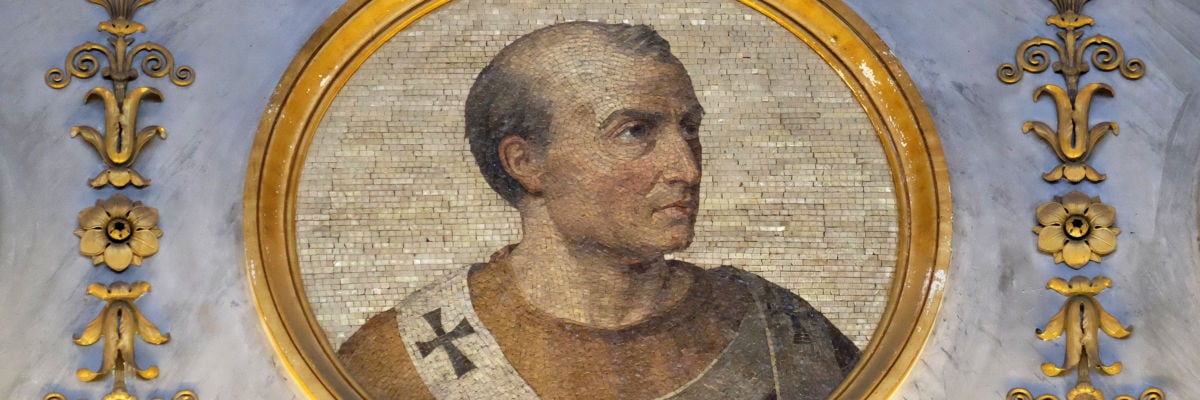

Gregory VI, Pope (John Gratian), date of birth unknown; elected May 1, 1045; abdicated at Sutri, December 20, 1046; d. probably at Cologne, in the beginning of 1048. In 1045 the youthful libertine Benedict IX occupied the chair of Peter. Anxious, in order, so it is said, that he might marry, to vacate a position into which, though wholly unfit, he had been thrust by his family, he consulted his godfather, John Gratian, the Archpriest of St. John “ad portam Latinam”, a man of great reputation for uprightness of character, as to whether he could resign the supreme pontificate. When he was convinced that he might do so, he offered to give up the papacy into the hands of his god-father for a large sum of money. Desirous of ridding the See of Rome of such an unworthy pontiff, John Gratian in all good faith and simplicity paid him the money and was recognized as pope in his stead. Unfortunately the accession of Gratian, who took the name of Gregory VI, though it was hailed with joy even by such a strict upholder of the right as St. Peter Damian, did not bring peace to the Church. When Benedict left the city after selling the papacy, there was already another aspirant to the See of Peter in the field. John, Bishop of Sabina, had been saluted as Pope Sylvester III by that faction of the nobility which had driven Benedict IX from Rome in 1044, and had then installed him in his stead. Though the expelled pontiff (Benedict IX) soon returned, and forced John to retire to his See of Sabina, that pretender never gave up his claims, and through his party contrived apparently to keep some hold on a portion of Rome. Benedict, also unable, it seems, to obtain the bride on whom he had set his heart, soon repented of his resignation, again claimed the papacy, and in his turn is thought to have succeeded in acquiring dominion over a part of the city.
With an empty exchequer and a clergy that had largely lost the savor of righteousness, Gregory was confronted by an almost hopeless task. Nevertheless, with the aid of his “capellanus” or chaplain, Hildebrand, destined to be the great Pope Gregory VII, he essayed to bring about civil and religious order. He strove to effect the latter by letters and by councils, and the former by force of arms. But the factions of the antipopes were too strong to be put down by him, and the confusion only increased. Convinced that nothing would meet the case but German intervention, a number of influential clergy and laity separated themselves from communion with Gregory or either of the two would be popes and implored the warlike King Henry III to cross the Alps and restore order. Nothing loath, Henry descended into Italy in the autumn of 1046. Strong in the conviction of his innocence, Gregory went north to meet him. He was received by the king with all the honor due to a pope, and in accordance with the royal request, summoned a council to meet at Sutri. Of the antipopes, Sylvester alone presented himself at the synod, which was opened December 20, 1046. Both his claim to the papacy and that of Benedict were soon disposed of. Deprived of all clerical rank and considered a usurper from the beginning, Sylvester was condemned to be confined in a monastery for the rest of his life. Benedict’s case also presented no difficulty. He had now no claim to the papacy, as he had voluntarily resigned it. But it was different with Gregory. However, when the bishops of the synod had convinced him that the act by which he had become supreme pontiff was in itself simoniacal, and had called upon him to resign, Gregory, seeing that little choice was left him, of his own accord laid down his office. A German, Suidger, Bishop of Bamberg (Clement II), was then elected to replace him. Accompanied by Hildebrand, Gregory was taken by Henry to Germany (May, 1047), where he soon died.
HORACE K. MANN


